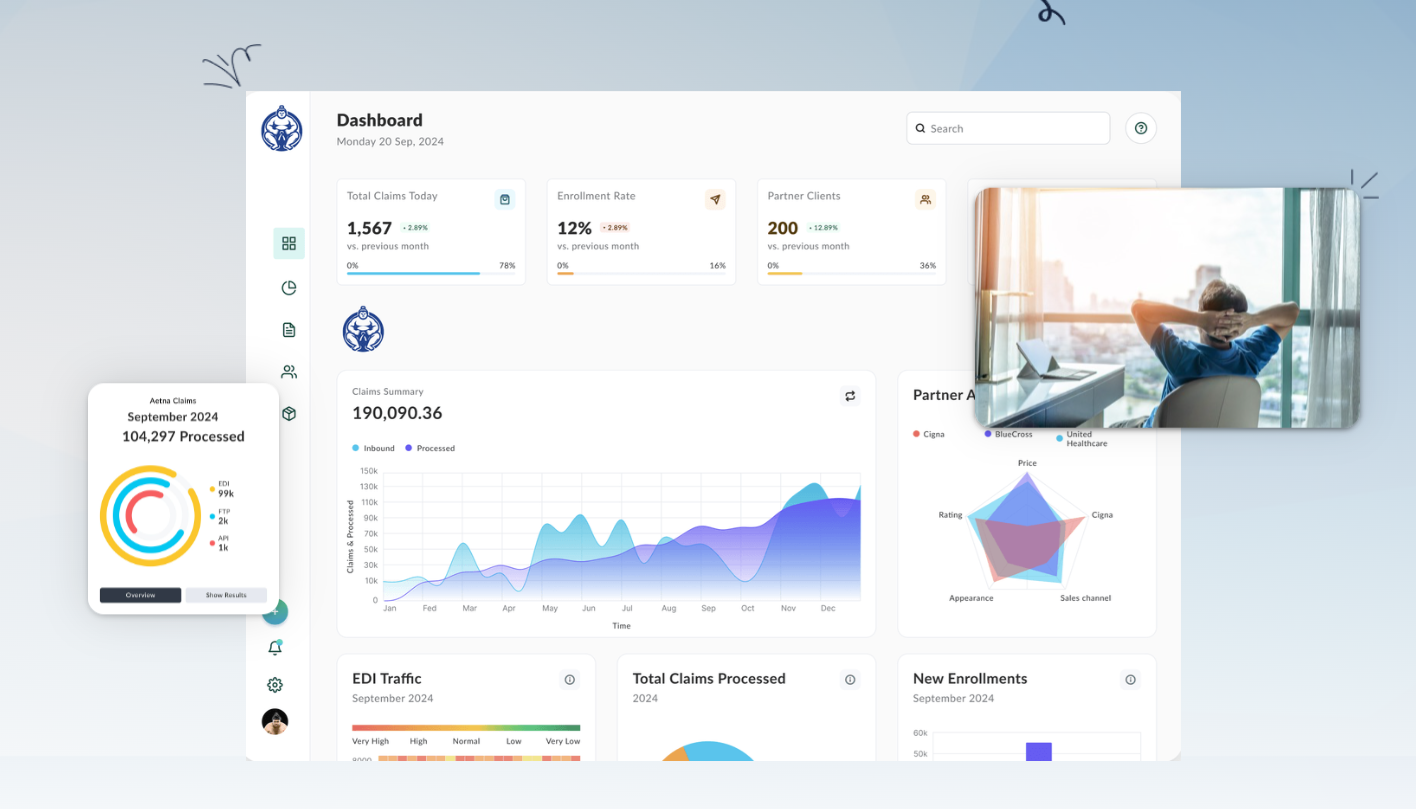What Is FHIR and Why It Matters for Modern Health Insurance Data Integration


Healthcare is undergoing a digital revolution, and at the center of this transformation is the drive for seamless data integration across insurance companies, providers, and patients. For those of us supporting healthcare payers, the quest to break down data silos is constant. That's where FHIR comes in—but what exactly is FHIR, and why has it become so critical for modern health insurance data integration?

Understanding FHIR: More Than Just an Acronym
FHIR stands for Fast Healthcare Interoperability Resources. It’s an open standard designed by HL7 (Health Level Seven International), with a goal to simplify—and standardize—how healthcare data is exchanged electronically.
In practical terms, FHIR is a blueprint for how different health systems—think EHRs, payers, and providers—can speak the same language. It lays out clear rules for representing clinical, administrative, and financial data, using "resources" for everything from patient demographics to claims and insurance coverage.
Where We’re Coming From: The Legacy Challenge
For decades, healthcare payers have managed data in complex, disparate formats: EDI 834s for enrollment, 837s for claims, assorted CSVs and XMLs for everything in between. This patchwork brings endless headaches:
- Data mapping nightmares: Every trading partner or provider might use a different format or a different definition for the same field.
- High support burden: IT teams spend countless hours translating, scrubbing, and reconciling data, instead of innovating.
- Delayed and error-prone processes: Manual touchpoints open the door to mistakes and slow down member, eligibility, and claims processes.
If you've worked in payer IT or data operations, you know these frustrations all too well.
How FHIR Changes the Game for Health Insurance Data Integration
FHIR was built for the realities—and the future—of healthcare data needs. Here’s why:
- Standardization: FHIR defines resources (like Patient, Coverage, Claim) in a universally agreed format—removing guesswork from integrations.
- API-centric approach: Unlike older standards that were document-heavy and batch-oriented, FHIR is designed around modern RESTful APIs—meaning real-time data access is possible.
- Flexibility: FHIR is extensible—if your use case demands additional data, you don’t have to break the standard. Extensions allow for flexibility without sacrificing compatibility.
- Security and Compliance: FHIR is compatible with industry security standards, such as OAuth2 and HIPAA requirements, making it safer for handling sensitive information.
FHIR in Action for Payers: Use Cases That Matter
Making FHIR practical requires connecting it to real business value for health insurers. Some impactful use cases include:
- Real-Time Eligibility Checks: Instantly verify member coverage and benefits with standardized queries between payer and provider systems.
- Claims Submission and Status: Enable providers, platforms, or partner networks to submit claims and check their status through a unified API model—no more juggling multiple formats or manual uploads.
- Member Access to Data: Empower members with apps that aggregate their coverage, claims, and eligibility information, supporting federal mandates on interoperability.
- Simplified Integrations: Connect with existing core systems, EDI translators, and third-party platforms more efficiently, reducing project timelines and ongoing support costs.
Why FHIR Alone Isn't the Whole Solution
For established payers, adopting FHIR isn’t as simple as flipping a switch. Most organizations still receive and produce EDI 834s, 837s, CSVs, and even older positional flat files. These formats are not going away overnight—even as FHIR adoption grows. That's where expertise in bridging formats and standards becomes crucial.
At EDI Sumo, we see FHIR as a next-generation integration tool—not a replacement for the robust EDI ecosystem that still processes millions of records daily. The real power lies in unifying the old and new, so health plans can support every trading partner and technology requirement, while seamlessly embracing FHIR where it fits best.

Best Practices for Payers Leveraging FHIR
We've learned valuable lessons working with insurers who want to accelerate their FHIR journeys:
- Assess Your Data Landscape: Catalog what data you’re receiving and sending, and identify where FHIR-compliant APIs can simplify or speed up current workflows.
- Prioritize Integration Touchpoints: Focus on integrating FHIR where it makes the most impact—such as eligibility and claims APIs, and places where regulatory deadlines apply.
- Invest in Standardization: Whether FHIR, EDI, CSV, or XML, ensure data is validated, deduplicated, and harmonized before reaching your core systems. Dirty data in, problems out.
- Maintain Compliance and Security: Protect sensitive health and insurance information by choosing solutions and architectures that meet HIPAA, GDPR, and other rigorous privacy standards.
- Plan for Hybrid Reality: For the foreseeable future, expect to operate a hybrid environment—one foot in EDI, one foot in FHIR. Modular, future-proof integration platforms let you adapt without expensive overhauls.
Why FHIR Adoption Is Accelerating: Regulatory and Business Drivers
The push toward FHIR isn’t just technological—it’s being driven by major policy initiatives and clear business needs:
- CMS Interoperability and Patient Access Rule: U.S. regulations require payers to provide members access to their claims and coverage data via API, and many explicitly name FHIR as the required standard.
- Member-Centric Experience: Consumers now demand real-time access to their health and insurance data—something FHIR’s API-first model uniquely enables.
- Operational Efficiency: True interoperability reduces redundant data entry, errors, and manual processes—freeing up resources for innovation instead of firefighting.
EDI Sumo’s Perspective: Future-Proofing Healthcare Data for All Formats
We believe FHIR is a pivotal leap forward, but our work with healthcare insurers has taught us that real-world integration doesn’t favor a single format. True operational agility means:
- Automating data intake from all file types—EDI, CSV, XML, FHIR, and beyond
- Standardizing and validating this information to eliminate data silos and manual rework
- Delivering data to end users and core systems in real time
- Reducing support burden on IT, while keeping compliance and audit readiness a priority
This philosophy is at the heart of how we support vision, dental, and health insurers who want to embrace the future—whether that’s FHIR APIs, classic EDI, or something in between.
Getting Started with FHIR and EDI Sumo
Embarking on your FHIR journey doesn’t have to mean abandoning the strengths of your current systems. Instead, ask:
- Where can APIs (like those powered by FHIR) deliver immediate ROI for our teams and members?
- What’s the best way to standardize and validate data across old and new feeds?
- How do I stay compliant and secure without building custom connectors for every new partner?
This approach allows you to modernize at your own pace—introducing FHIR-based workflows where they make sense, while leveraging robust data integration and validation across your entire enterprise.
Final Thoughts: FHIR as a Foundation, Not a Silver Bullet
FHIR matters because it sets a new standard for interoperability, scalability, and transparency—empowering health insurers to meet modern demands. But it matters most when combined with a pragmatic approach to data integration that handles the whole spectrum, from legacy EDI to real-time APIs. In this era, agility comes from bridging both worlds.
If you’re facing the pain of data chaos—or want to lead your payer org into the next era of integration—consider how a future-proof platform can help you support any format, accelerate FHIR adoption, and stay compliant. Modernization doesn’t have to be all-or-nothing; it just needs to be strategic and thoughtful.
Want to see how we help you navigate FHIR and every other data challenge in insurance? Explore EDI Sumo’s solutionsor schedule a demo with our team and let's modernize data integration—together.


.png)





.png)

.png)


.png)
